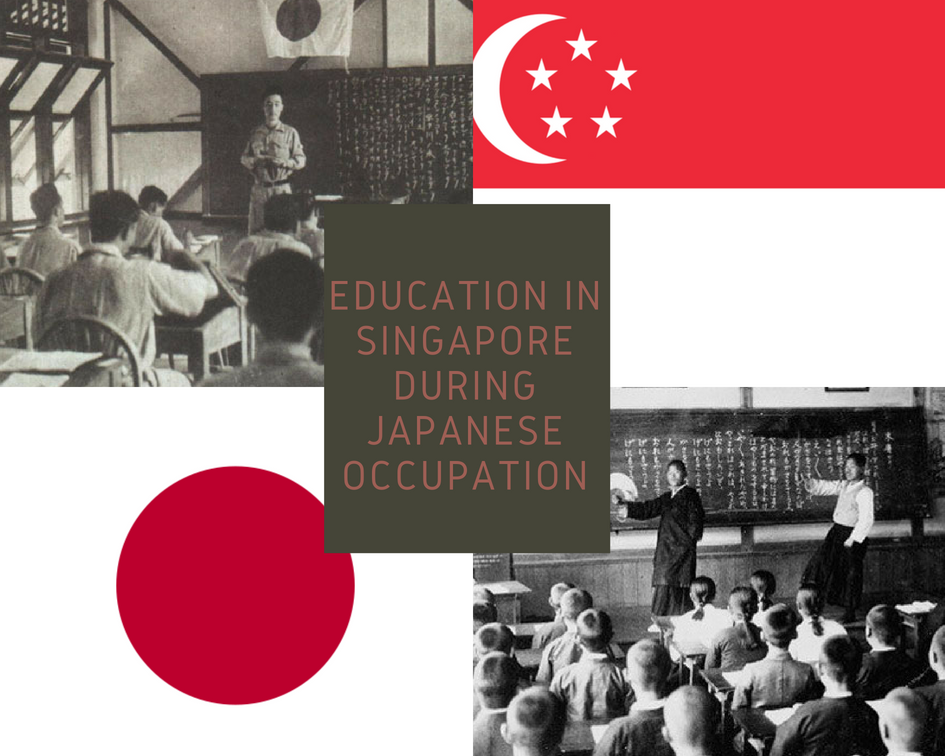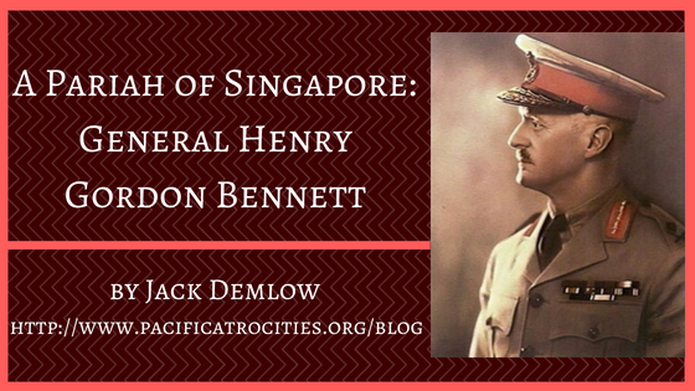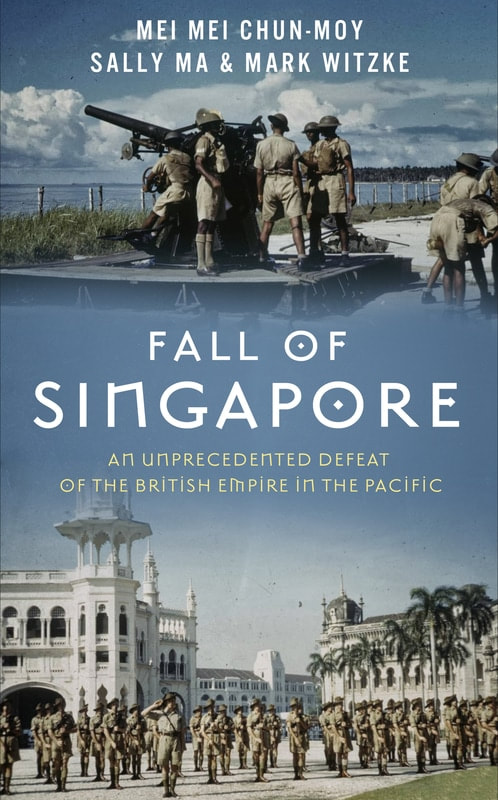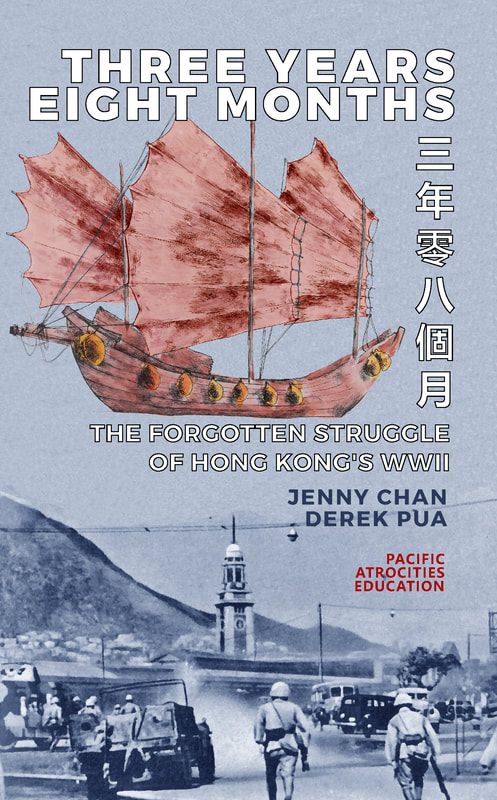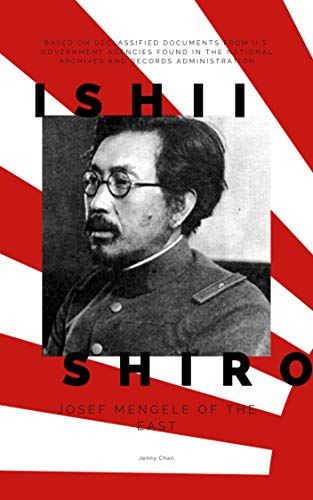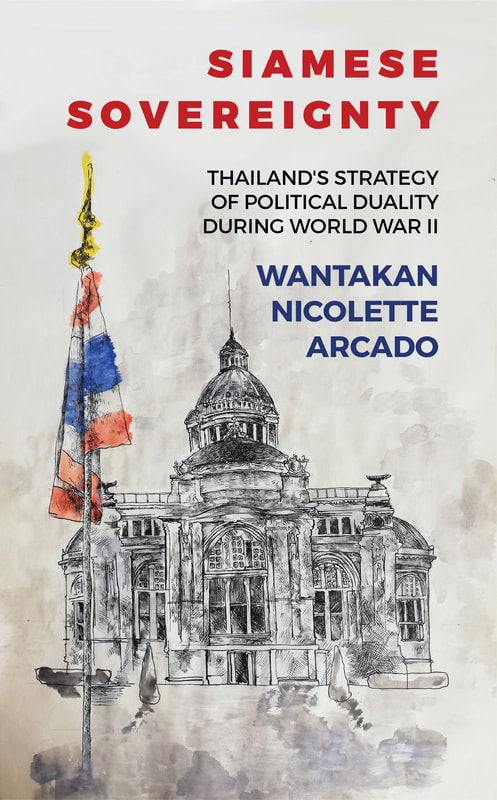|
by Kelly Peng
The Japanese occupation of Singapore took place from 1942 to 1945 after the British surrendered in February 1942. One month later, in March 1942, the Japanese government adopted an educational policy as part of the “Principles for the Gunsei Disposition of the Occupied Area”.
(continued) The objectives of the policy were to teach industrial technologies and the Japanese language as the lingua franca of the Greater East Asia Co-Prosperity Sphere, to promote the spirit of labor, and to unite the cultures of the indigenous peoples of the southern region with Japanese culture under the spirit of Hakko Ichiu (universal brotherhood). Education was essentially a propaganda tool.
In order to make Japanese the lingua franca of the co-prosperity sphere, Japanese had to be taught in schools. The government’s desire to create a unified education system meant taking over the different language schools from the colonial regime. When the Japanese took control of English, Malay, and Chinese schools, they also set up a few Indian “national” schools (most of which were staffed by unqualified teachers and were used mainly to spread propaganda about the Indian independence movement). Colonel Watanabe Wataru (Chief of General Affairs Department) ordered primary schools to allow only Japanese or Malay as the language of instruction and to abolish the use of English, Dutch, and to ban Chinese for the time being. Teaching in Malay was permitted in Malay schools since it was the indigenous language and the Japanese encouraged the study of Japanese in other schools. Watanabe wrote about his reform ideas in a notice “Principles for Reforming School Education,” in which he said that Japanese language education at all levels must be emphasized to educate the people in their everyday life in discipline, obedience, and cooperation. Local teachers were required to learn Japanese as well. He regarded the retraining of local teachers as important, a “spiritual misogi (washing away of impurities)” that would eliminate the materialistic and individualistic western way of life that had stained the indigenous culture, and that would generate an oriental morality based upon seishin (the spirit of the imperial way). Forcibly teaching Japanese was not easy to implement. Mamoru Shinozaki, a chief executive of the education department during the occupation, noticed that there was a shortage of teachers and textbooks. The first Japanese textbooks did not arrive until July 1942. Because of this inconvenience, upon opening the first school in April 1942, Mamoru had to allow the use of English. Besides enforcing the Japanese language, the government also rejected the former British educational curriculum, which emphasized academic subjects, and instead, focused on character building, physical training, vocational instruction, and primary education. By March 1943, Singapore had six technical schools. In the same year, the medical college in Tan Tock Seng Hospital was reopened and two teacher training schools were opened. Even in technical institutions, the curriculum consisted of language training, indoctrination, and rudimentary crash courses designed to meet wartime needs. A six month course at the naval construction and engineering centre devoted half the time to learning Japanese. Similarly, in the teachers’ training colleges and the leading officials training institute, a significant amount of time was taken up in studying the language, “nippon (Japan) spirit”, military arts, and gardening. As part of this kodo seishin (spirit of imperial way) education policy, the gunsei kambu (Military Administrative Superintendency) observed Japan’s national holiday and enforced on people to participate in a ceremony in which they bowed in the direction of the imperial palace, shouted three cheers for the emperor, and sang the kimigayo (Japanese national anthem), and on December 8 listened to the declaration of war on the allied powers. This type of education was supposed to strengthen their bond of trust in imperial Japan and teach basic knowledge, skills, the spirit of labor, and self-sacrifice, while deemphasizing intellectual education. Watanabe was interested in training manpower to unite young men around a common objective and to reconstruct a war-torn society. He established the Syonan Koa Kunrenjo (Asia Development Training Institute) in May 1942, in which trainees between the ages of 17 and 25 were trained for three months (later six months). The trainees underwent a rigorous physical and spiritual training along with language study. When Watanabe attended the Kunrenjo’s first commencement exercise, the cadets impressed him with their spiritual discipline and vigorous physical appearance. Even in a military-like training program youths were required to study the language and have spiritual training. The intention of enforcing Japanese language lessons and technical training, idealizing labor, and unifying indigenous cultures with japanese culture was to promote imperial Japan’s vision for the larger Asian region, including the ideas of “Asia for Asiatics” and the “Greater East Asia Co-Prosperity Sphere”. These views supported the idea of the Japanese as the liberators of Asia from the enslavement of Western rule. To learn more about this, check out our publication. References
Related ArticlesRelated Books
122 Comments
charu yuvaraj
2/22/2020 09:22:46 pm
just a quick qn were the girls treated differently compared to the boys during this period of time
Reply
Dzaqybro
2/26/2020 04:02:00 pm
Idk
Reply
Caecool
4/10/2021 05:54:37 am
Yes they definetely were! I hate to say this but, they were raped and abused by the Japanese wayy more than the boys. You can go onto youtube and search for videos related to female abuse.
Reply
childp
4/11/2023 03:49:58 am
wait like uncensored
YOU BLACK NIGGERS
2/6/2023 09:03:03 pm
I FUCKING HATE NIGGERS THEY ARE SO FUCKING BLAACK AND NIGGER NIGGER
Reply
হ্যালো এটা ভারতীয় প্রযুক্তি সমর্থন মনে হচ্ছে আপনার কম্পিউটারে ভাইরাস লেগেছে কিভাবে আমি আপনাক
5/2/2023 10:42:24 pm
NIGGERNIGGERNIGGERNIGGERNIGGERNIGGERNIGGERNIGGERNIGGERNIGGERNIGGERNIGGERNIGGERNIGGERNIGGERNIGGERNIGGERNIGGERNIGGERNIGGERNIGGERNIGGERNIGGERNIGGERNIGGERNIGGERNIGGERNIGGERNIGGERNIGGERNIGGERNIGGERNIGGERNIGGERNIGGERNIGGERNIGGERNIGGERNIGGERNIGGERNIGGERNIGGERNIGGERNIGGERNIGGERNIGGERNIGGERNIGGERNIGGERNIGGERNIGGERNIGGERNIGGERNIGGERNIGGERNIGGERNIGGERNIGGERNIGGERNIGGERNIGGERNIGGERNIGGERNIGGERNIGGERNIGGERNIGGERNIGGERNIGGERNIGGERNIGGERNIGGERNIGGERNIGGERNIGGERNIGGERNIGGERNIGGERNIGGERNIGGERNIGGERNIGGERNIGGERNIGGERNIGGERNIGGERNIGGERNIGGERNIGGERNIGGERNIGGERNIGGERNIGGERNIGGERNIGGERNIGGERNIGGERNIGGERNIGGERNIGGERNIGGERNIGGERNIGGERNIGGERNIGGERNIGGERNIGGERNIGGERNIGGERNIGGERNIGGERNIGGERNIGGERNIGGERNIGGERNIGGERNIGGERNIGGERNIGGERNIGGERNIGGERNIGGERNIGGERNIGGERNIGGERNIGGERNIGGERNIGGERNIGGERNIGGERNIGGERNIGGERNIGGERNIGGERNIGGERNIGGERNIGGERNIGGERNIGGERNIGGERNIGGERNIGGERNIGGERNIGGERNIGGERNIGGERNIGGERNIGGERNIGGERNIGGERNIGGERNIGGERNIGGERNIGGERNIGGERNIGGERNIGGERNIGGERNIGGERNIGGERNIGGERNIGGERNIGGERNIGGERNIGGERNIGGERNIGGERNIGGERNIGGERNIGGERNIGGERNIGGERNIGGERNIGGERNIGGERNIGGERNIGGERNIGGERNIGGERNIGGERNIGGERNIGGERNIGGERNIGGERNIGGERNIGGERNIGGERNIGGERNIGGERNIGGERNIGGERNIGGERNIGGERNIGGERNIGGERNIGGERNIGGERNIGGERNIGGERNIGGERNIGGERNIGGERNIGGERNIGGERNIGGERNIGGERNIGGERNIGGERNIGGERNIGGERNIGGERNIGGERNIGGERNIGGERNIGGERNIGGERNIGGERNIGGERNIGGERNIGGERNIGGERNIGGERNIGGERNIGGERNIGGERNIGGERNIGGERNIGGERNIGGERNIGGERNIGGERNIGGERNIGGERNIGGERNIGGERNIGGERNIGGERNIGGERNIGGERNIGGERNIGGERNIGGERNIGGERNIGGERNIGGERNIGGERNIGGERNIGGERNIGGERNIGGERNIGGERNIGGERNIGGERNIGGERNIGGERNIGGERNIGGERNIGGERNIGGERNIGGERNIGGERNIGGERNIGGERNIGGERNIGGERNIGGERNIGGERNIGGERNIGGERNIGGERNIGGERNIGGERNIGGERNIGGERNIGGERNIGGERNIGGERNIGGERNIGGERNIGGERNIGGERNIGGERNIGGERNIGGERNIGGERNIGGERNIGGERNIGGERNIGGERNIGGERNIGGERNIGGERNIGGERNIGGERNIGGERNIGGERNIGGERNIGGERNIGGERNIGGERNIGGERNIGGERNIGGERNIGGERNIGGERNIGGERNIGGERNIGGERNIGGERNIGGERNIGGERNIGGERNIGGERNIGGERNIGGERNIGGERNIGGERNIGGERNIGGERNIGGERNIGGERNIGGERNIGGERNIGGERNIGGERNIGGERNIGGERNIGGERNIGGERNIGGERNIGGERNIGGERNIGGERNIGGERNIGGERNIGGERNIGGERNIGGERNIGGERNIGGERNIGGERNIGGERNIGGERNIGGERNIGGERNIGGERNIGGERNIGGERNIGGERNIGGERNIGGERNIGGERNIGGERNIGGERNIGGERNIGGERNIGGERNIGGERNIGGERNIGGERNIGGERNIGGERNIGGERNIGGERNIGGERNIGGERNIGGERNIGGERNIGGERNIGGERNIGGERNIGGERNIGGERNIGGERNIGGERNIGGERNIGGERNIGGERNIGGERNIGGERNIGGERNIGGERNIGGERNIGGERNIGGERNIGGERNIGGERNIGGERNIGGERNIGGERNIGGERNIGGERNIGGERNIGGERNIGGERNIGGERNIGGERNIGGERNIGGERNIGGERNIGGERNIGGERNIGGERNIGGERNIGGERNIGGERNIGGERNIGGERNIGGERNIGGERNIGGERNIGGERNIGGERNIGGERNIGGERNIGGERNIGGERNIGGERNIGGERNIGGERNIGGERNIGGERNIGGERNIGGERNIGGERNIGGERNIGGERNIGGERNIGGERNIGGERNIGGERNIGGERNIGGERNIGGERNIGGERNIGGERNIGGERNIGGERNIGGERNIGGERNIGGERNIGGERNIGGERNIGGERNIGGERNIGGERNIGGERNIGGERNIGGERNIGGERNIGGERNIGGERNIGGERNIGGERNIGGERNIGGERNIGGERNIGGERNIGGERNIGGERNIGGERNIGGERNIGGERNIGGERNIGGERNIGGERNIGGERNIGGERNIGGERNIGGERNIGGERNIGGERNIGGERNIGGERNIGGERNIGGERNIGGERNIGGERNIGGERNIGGERNIGGERNIGGERNIGGERNIGGERNIGGERNIGGERNIGGERNIGGERNIGGERNIGGERNIGGERNIGGERNIGGERNIGGERNIGGERNIGGERNIGGERNIGGERNIGGERNIGGERNIGGERNIGGERNIGGERNIGGERNIGGERNIGGERNIGGERNIGGERNIGGERNIGGERNIGGERNIGGERNIGGERNIGGERNIGGERNIGGERNIGGERNIGGERNIGGERNIGGERNIGGERNIGGERNIGGERNIGGERNIGGERNIGGERNIGGERNIGGERNIGGERNIGGERNIGGERNIGGERNIGGERNIGGERNIGGERNIGGERNIGGERNIGGERNIGGERNIGGERNIGGERNIGGERNIGGERNIGGERNIGGERNIGGERNIGGERNIGGERNIGGERNIGGERNIGGERNIGGER
hujceswyweioguuwfeioe
5/2/2023 10:47:27 pm
μισώ τη μαύρη μαϊμού
white
5/4/2023 06:58:35 pm
I LOVE SLAVERY RAHHHHHHHHH
Beverly Lee
3/16/2020 09:19:08 pm
Are you sure the 2nd photo is taken in a Singapore classroom? I am referring to the 2 men in Japanese traditional costumes and children seated. Students in Singapore do not wear such thick long-sleeved jacket tops in the hot weather in Singapore. I think this photo shows a classroom in Asia eg China, Taiwan or Korea but not in Singapore.
Reply
Mak Kau Hijau
1/26/2021 09:12:03 pm
Fuck you! Your penis is as lembek as a sweet potato. Kan ni na penis licker. U wanker la go kys. Ur family die hahah
Reply
pantat
1/28/2021 05:07:25 pm
legend
A student
3/22/2021 10:33:10 pm
Your word choice please, there are students reading this!
Nestor
3/22/2021 10:46:58 pm
Language
Nestor
3/22/2021 10:48:20 pm
U gangster. So vulgar
Nestor
3/22/2021 10:49:50 pm
U people no parents to teach respect
kaizer
3/22/2021 10:51:48 pm
bruh ken u not
seafoxy
3/23/2021 06:04:14 am
u gay
Creator of this website plz ban him
4/10/2021 05:56:40 am
You think you are so funny? Well you are not. If you were trying to gain attention then good job but all I am goin to say is that you are a horrible person. You saying all this is indirectly saying you are useless to society.
ARE YOU BOTS
3/6/2022 04:47:23 pm
MAKKKK KAU HIJIAUUUUUUUUUU WTH THAT NAME MAN
best man
5/2/2023 10:50:22 pm
LESSS GOO COMMON W FOR THIS MAN
HAHA
5/7/2023 09:11:46 pm
to the guy called 'creator of website pls ban him'
kumalala kumalala
1/16/2024 08:02:53 pm
I DONT WANT THIS HISTORY SHITTTTTTTTTTTTTTTT
alaister
1/30/2024 06:54:02 pm
lmao im laughing so had in class
Ur lost father
2/17/2024 06:54:05 pm
I did ur mom. U are stupid gay nigga. Ur mom doesn’t love u, I left u, milk is more important than u. Dickless nigga like u should have been aborted. U are ugly and cannot get bitches. Go hang urself in a gay stripping club, since u are worthless son of a bitch
sex
4/11/2022 05:41:12 pm
konek kau kecik siot. cb
Reply
ok
4/10/2024 10:37:26 pm
yummy num num num
Kan ni na buay chau chee bye
5/18/2024 07:30:34 am
γάμα τη μάνα σου! είσαι τόσο άσχημος, ακόμα και ο χαλαρός πουλί μου που καλύπτεται από το σμέγμα φαίνεται πιο όμορφος από σένα! Θέλω να δω το σώμα σου κρεμασμένο με ένα σχοινί και να το χρησιμοποιώ ως σάκο του μποξ ενώ το ταΐζω στα σκυλιά!
NIGGER
2/6/2023 09:01:41 pm
NIGGER NIGGER NIGGER NIGGER NIGGER NIGGER
Reply
Texrftgyhujikmnbvhgcdr
4/5/2023 06:45:24 am
Racist son of a bitch
Twitter
4/18/2023 10:15:18 am
Hello N word :). I think you know who this is
slavery haver
5/6/2023 09:07:39 pm
I FUCKING HATE NIGGERS GO BACK AND PLUCK COTTON RAHHHHH
FUCK THOSE BLACKIES
5/7/2023 09:16:22 pm
I M A LGBTQ HATER HAHAHAH GOKYS HAHAHAhAHHAHAHAAHHAHHAHAH I LOVE HOMOPHOBIA HAHAHAHHAHAHA RAHHHHHHHHHHHHHHHHHHHHHHHHHHHHHHHHHHHHH SLIT YOUR FUCKING WRIST GAYS AND LESBIANS YOU SERVE NO USE IN SOCEITY ALL YOU DO IS PROUDLY SAY 'umm actually pls dont use the wrong pronoun umm i m actually (insert idoit gender). HAHAHAHAHAH THERE ARE 2 GENDERS NOT LGBTQ HAHAHA. IF U R A FURRY I HOPE YOU BURN IN HELL!!
um
4/10/2024 10:45:40 pm
yes? 2/2/2021 02:19:31 am
BRAKA MONOGA! DOITSU NO KAKAGU SEKAICHI!!!
Reply
ur mom
3/22/2021 10:34:57 pm
eat ur smelly kuchi
Reply
ARE YOU BOTS
3/6/2022 04:42:53 pm
bruh,you guys dam lame eh,1v1 cod lah
CSGO HAVER
5/7/2023 09:18:41 pm
eh you even more lame lah play cod for what so lousy you think you so good
slay
1/30/2024 06:54:58 pm
1v1 me valorant lah cb
Another student
3/22/2021 10:37:44 pm
Guys please be friendly towards others and no insulting comments as it will hurt others.
Reply
shanti latni
5/7/2023 09:19:22 pm
it wont shanti lanti change anything
Reply
I HATE NIGGERS
3/17/2024 05:56:13 am
KILL ALL NIGGERS KILL ALL NIGGERS I HATE NIGGERS THEY CAN ALL BURN IN HELL I FUCKING THIS FRY NIGGERS LYNCH NIGGERS RAPE NIGGERS BURN ALL NIGGERS GET THE FUCK OUT OF THE SERVER YOURE A NIGGER I SWEAR
Reply
wut now
4/10/2024 10:26:58 pm
nah whar
Stick
4/10/2024 10:28:58 pm
brotha what that shits crazy on god
Bryann Kho
4/22/2021 05:48:03 pm
fucking chi bai dog pundeh your mother passs away is good i rambak you in toiet then you know ah you little faggot chao chi bai confirm your mother drop you on your ead one chao chi bai dog na bei cockeye
Reply
wwww man
5/2/2023 10:55:54 pm
common bryann W
Reply
Another another student
8/15/2021 04:23:29 am
Uhh u guys like what P6 ah still doing this. Bruh grow up
Reply
radom guy
5/2/2023 10:46:40 pm
slit your wrist
Reply
is
5/4/2023 06:51:00 pm
你笨过头了!我看你我想自杀!你这个lanjiao去跳楼!去和你妈妈在床上做孩子!你这个混蛋, 去吃个毛吧!你这么老鸭的一个人, 去被车子撞死吧!
Reply
stundent
5/4/2023 06:52:05 pm
bruh
nar
4/10/2024 10:30:18 pm
damn bro thats harsh
guy
1/16/2022 03:26:58 am
people in the past needed to learn japanese now, I want to learn japanese for fun
Reply
dcsdfshrkg
5/2/2023 10:48:18 pm
Once a bomber, always a bomber
Reply
lol
4/10/2024 10:29:26 pm
na way
material gworl
2/26/2022 06:38:23 am
what in the orange ez link card are these comments bro
Reply
abcdefghi__lmnopqrstuvwxyz
3/25/2022 07:29:01 pm
omg same LMAO this is chaos
a student
4/11/2024 05:14:04 pm
omg so true bro
bangl man
5/7/2023 09:02:59 pm
যাও তোমার মাকে চুদ! আপনার পুরুষাঙ্গ এত ছোট যে আপনার পূর্বপুরুষ পর্যন্ত দেখতে পাচ্ছেন না! তুমি চিং চং কুকুরকে খাও! তোমার দেশে ফিরে যাও এবং রেকুন খাও
Reply
ARE YOU BOTS
3/6/2022 04:45:55 pm
god please help these children
Reply
SSSSSS
5/4/2023 07:01:10 pm
011010101001101010000101111101010001010101010101010011010101001101010000101111101010001010101010101010011010101001101010000101111101010001010101010101010011010101001101010000101111101010001010101010101010011010101001101010000101111101010001010101010101010011010101001101010000101111101010001010101010101010011010101001101010000101111101010001010101010101010011010101001101010000101111101010001010101010101010011010101001101010000101111101010001010101010101010011010101001101010000101111101010001010101010101010011010101001101010000101111101010001010101010101010011010101001101010000101111101010001010101010101010011010101001101010000101111101010001010101010101010011010101001101010000101111101010001010101010101010011010101001101010000101111101010001010101010101010011010101001101010000101111101010001010101010101010011010101001101010000101111101010001010101010101010011010101001101010000101111101010001010101010101010
Reply
god
4/10/2024 10:51:07 pm
um theyr kinda ded now
Reply
god
3/7/2022 03:51:47 am
yess i have been summoned
Reply
ARE YOU BOTS
3/7/2022 06:24:41 pm
NOW,SUMMON THE ALLAH
Reply
allah
4/10/2024 10:52:07 pm
slay im here
Allah
3/7/2022 06:25:31 pm
wtf you want lah
Reply
srdrs
4/11/2024 05:14:59 pm
yo mama
Reply
sial
3/31/2022 05:32:11 pm
FUCK YOUR MOTHERRR
Reply
sure
4/11/2023 03:39:24 am
no shit
Reply
yes king
4/10/2024 10:53:35 pm
yummy mommy
Reply
abcdef
4/11/2024 05:15:49 pm
an online battle raging :skull:
Reply
reasercher
4/25/2022 04:51:23 pm
is trere any slauter house during ww2 in sg? and if thre is,where?
Reply
9/15/2022 02:26:24 am
Consider TUTOROO if you are looking for a native Japanese tutor in Singapore. You can hire teachers and native Japanese speakers to help you learn the Japanese language more quickly and effectively.
Reply
mak kau
1/4/2023 08:00:58 pm
sialla choa chibai mak kau backflip satu bumi bergegar siol
Reply
baba black boy
1/5/2023 06:12:29 pm
eh fuck youre mother lah cb mak kau hijau dapak kau lesbian pussy mak kau macam grand canion siol
Reply
Black Panther
2/5/2023 06:27:36 pm
WAKANDA FOREVER
Reply
Zxrctfyvguhbinjm
4/5/2023 06:48:58 am
Not the future ite students saying this shit, can y’all stop fr
Reply
MY AN
5/2/2023 10:52:49 pm
kys
Reply
Knn wtf is this this sucking cock shit known as children. im ur omther stoopid pblack nigger. i was raised in a prestiged househole and will not swear unlike u fucking children who got raised in fucking long kang. bro u -ppl so unciivelised ul=nlike me u know. be better kids ok blackies nigger i hate niggers. NIGGER if u reading this fuck ur mother [pusssy and just fuck ur mother. nigger nigger nigger nigger nigger nigger nigger nigger nigger nigger nigger nigger nigger nigger nigger nigger nigger nigger nigger nigger nigger nigger nigger nigger nigger nigger nigger nigger nigger nigger nigger nigger nigger nigger nigger nigger nigger nigger nigger nigger nigger nigger nigger nigger nigger nigger nigger nigger nigger nigger nigger nigger nigger nigger nigger nigger nigger nigger nigger nigger nigger nigger nigger nigger nigger nigger nigger nigger
Reply
Twitter
4/18/2023 10:17:38 am
Hello UR MOM. I think you know who this is :)
Reply
edddddddd
5/7/2023 09:05:09 pm
www.youtube.com/playlist=9/Qu76vBl9/=true
sex haver
5/6/2023 09:09:38 pm
i had sexual intercourse with your mother last night🥵🥵🥵
Reply
Twitter
4/18/2023 10:19:16 am
Hello everyone :)
Reply
someome
5/2/2023 10:49:26 pm
elon musk go kill yoursef
Reply
elon musk hater
5/7/2023 09:05:45 pm
elon musk i luv u ur tesla blow up
Reply
Twitter
8/17/2023 06:15:54 pm
Good, cuz I don't want see your face on my platform and especially the people who are using platform does not want you here
pedophile
1/25/2024 05:49:03 pm
I kidnap young childrens
Female abuser
5/2/2023 10:49:35 pm
i abuse females i rape people i will rape your girls next
Reply
student b
5/2/2023 10:55:12 pm
my guy you have gone too far
Reply
Manu balisitti
5/2/2023 10:51:53 pm
i hate niggers
Reply
shit g suks
5/7/2023 09:07:19 pm
I FUCKING HATE ANDREW TATE HE SHOULD DRIVE HIS DAMN UGLY BUGATTI OF THE CLIFF AND KILL HIMSELF! ALL YOU TATE DICKRIDERS!!! FUCKING SLIT YOUR WRIST HAHAHAHAHAHAHAHAJ
Reply
8/3/2023 05:31:11 pm
I love niggers especially when they give me backshots in the bathroom stall like tom holland
Reply
Twitter user
8/17/2023 06:16:46 pm
RACIST BITCH!
Reply
Awesome! This is incredibly helpful.
Reply
Using these great suggestions can help when learning a new language. Thanks for this!
Reply
deron
1/8/2024 06:00:13 pm
i like sucking cock and fuck ching chongs
Reply
xenzel
1/16/2024 08:07:19 pm
I LOVE DERON'S DICK. I LOVE GIVING HIM BLOWJOBS SECRETLY IN THE BATHROOM STALLS. I LOVE TOUCHING HIS ASSCHEEKS. MMMM MY BABE
Reply
rayhan
1/16/2024 08:09:36 pm
ME TOOOOOOOO
Reply
aqeel
1/16/2024 08:10:30 pm
I LOVE SPANKING RAYHAN'S BUTTCHEEKS.. THEY ARE SOO HUGE, BABE. I LOVE HIS HARD COCK IN MY FACE WOWIE!!!!
Reply
me
1/16/2024 08:14:04 pm
kys
Reply
qwerty
1/17/2024 03:18:13 pm
hi
Reply
im hard
1/17/2024 09:26:42 pm
when u hard, u hard.
Reply
Pedophile
1/25/2024 05:51:15 pm
I kidnap young childrens and fuck them
Reply
Valerie
1/29/2024 06:05:27 am
Are the people in the comments okay 💀
Reply
guy
2/21/2024 04:32:32 am
worse than a seizure for all I can say
Reply
For people who is saying rude shit to people thinking they are funny
1/29/2024 06:23:31 am
Eh relax ah, you guys think what you said is so funny and cool meh, stop acting like kids. Shut up and get a life.
Reply
fuck all this niggas in here black monkeys
2/1/2024 07:36:36 pm
fuck all this monkey go back to the jungle
Reply
dejohnnnn
2/11/2024 10:38:36 pm
i just stumbled onto this masterpiece while researching for my history exam
Reply
rose
5/18/2024 07:36:02 am
me too😂
Reply
Leave a Reply. |
- Home
- Stories
-
Internship
- Summer 2024 Internship
- Summer 2023 Internship
- Fall 2022 Internship
- Summer 2022 Internship
- Summer 2021 Internship
- Fall 2020- Spring 2021 Internship
- Summer 2020 Internship
- Fall 2019 Internship
- Summer 2019 Internship >
- School Year 2018-2019 Internship
- Summer 2018 Internship >
- Fall 2017 Internship
- Summer 2017 Internship >
- Books
- Archives
-
Resource Page
-
Supplementary Research Guides
>
- Unit 731 - Guide >
-
Philippines' Resistance - Guide
>
- Philippines World War II Timeline
- The Japanese Invasion & Conquest of the Philippines
- Bataan Death March
- Formation of Underground Philippines Resistance
- Supplies of the Guerrilla Fighters
- The Hukbalahap
- Hunter's ROTC
- Marking's Guerrillas
- United States Army Forces in the Philippines of Northern Luzon (USAFIP-NL)
- The Aetas
- Chinese and Filipino-Chinese Nationalist Guerrilla Units
- The Female Faces of the Philippine Guerrillas
- Rising Sun Flag - Guide >
- Pinay Guerrilleras - Guide >
- Fall of Singapore - Guide >
- Three Years and Eight Months - Guide >
- Siamese Sovereignty - Guide >
- The Khabarovsk War Crimes Trial - Guide >
- Unit 731 Cover-up : The Operation Paperclip of the East - Guide >
- Marutas of Unit 731 - Guide >
- Prince Konoe Memoir - Guide >
- Competing Empires in Burma - Guide >
- Battle of Shanghai - Guide >
- Ishi Shiro - Guide >
- Taiwan The Israel of the East - Guide >
- Seeking Justice for Biological Warfare Victims of Unit 731 - Guide >
- Rice and Revolution - Guide >
- Clash of Empires - Guide >
-
Hunger for Power and Self-SufficiencyI - Guide
>
- The Influence of War Rations on Post-War Culinary Transformations
- How World War II Complicated Food Scarcity and Invention
- American Military Innovations
- Government-Sponsored Food Inventions in Europe during World War II
- Feeding the Army: The Adaptation of Japanese Military Cuisine and Its Impact on the Philippines
- Mixed Dishes: Culinary Innovations Driven by Necessity and Food Scarcity
-
Denial A Quick Look of History of Comfort Women and Present Days’ Complication - Guide
>
- The Comfort Women System and the Fight for Recognition
- The Role of Activism and International Pressure
- The Controversy over Japanese History Textbooks
- The Sonyŏsang Statue and the Symbolism of Public Memorials
- Activism and Support from Japanese Citizens
- The Future of Comfort Women Memorials and Education
- Echoes of Empire: The Power of Japanese Propaganda - Guide >
- Lesson Plans >
-
Supplementary Research Guides
>
|
Pacific Atrocities Education
730 Commercial Street San Francisco, CA 94108 415-988-9889 |
Copyright © 2021 Pacific Atrocities Education.
We are a registered 501 (c)(3) charity. |
- Home
- Stories
-
Internship
- Summer 2024 Internship
- Summer 2023 Internship
- Fall 2022 Internship
- Summer 2022 Internship
- Summer 2021 Internship
- Fall 2020- Spring 2021 Internship
- Summer 2020 Internship
- Fall 2019 Internship
- Summer 2019 Internship >
- School Year 2018-2019 Internship
- Summer 2018 Internship >
- Fall 2017 Internship
- Summer 2017 Internship >
- Books
- Archives
-
Resource Page
-
Supplementary Research Guides
>
- Unit 731 - Guide >
-
Philippines' Resistance - Guide
>
- Philippines World War II Timeline
- The Japanese Invasion & Conquest of the Philippines
- Bataan Death March
- Formation of Underground Philippines Resistance
- Supplies of the Guerrilla Fighters
- The Hukbalahap
- Hunter's ROTC
- Marking's Guerrillas
- United States Army Forces in the Philippines of Northern Luzon (USAFIP-NL)
- The Aetas
- Chinese and Filipino-Chinese Nationalist Guerrilla Units
- The Female Faces of the Philippine Guerrillas
- Rising Sun Flag - Guide >
- Pinay Guerrilleras - Guide >
- Fall of Singapore - Guide >
- Three Years and Eight Months - Guide >
- Siamese Sovereignty - Guide >
- The Khabarovsk War Crimes Trial - Guide >
- Unit 731 Cover-up : The Operation Paperclip of the East - Guide >
- Marutas of Unit 731 - Guide >
- Prince Konoe Memoir - Guide >
- Competing Empires in Burma - Guide >
- Battle of Shanghai - Guide >
- Ishi Shiro - Guide >
- Taiwan The Israel of the East - Guide >
- Seeking Justice for Biological Warfare Victims of Unit 731 - Guide >
- Rice and Revolution - Guide >
- Clash of Empires - Guide >
-
Hunger for Power and Self-SufficiencyI - Guide
>
- The Influence of War Rations on Post-War Culinary Transformations
- How World War II Complicated Food Scarcity and Invention
- American Military Innovations
- Government-Sponsored Food Inventions in Europe during World War II
- Feeding the Army: The Adaptation of Japanese Military Cuisine and Its Impact on the Philippines
- Mixed Dishes: Culinary Innovations Driven by Necessity and Food Scarcity
-
Denial A Quick Look of History of Comfort Women and Present Days’ Complication - Guide
>
- The Comfort Women System and the Fight for Recognition
- The Role of Activism and International Pressure
- The Controversy over Japanese History Textbooks
- The Sonyŏsang Statue and the Symbolism of Public Memorials
- Activism and Support from Japanese Citizens
- The Future of Comfort Women Memorials and Education
- Echoes of Empire: The Power of Japanese Propaganda - Guide >
- Lesson Plans >
-
Supplementary Research Guides
>
